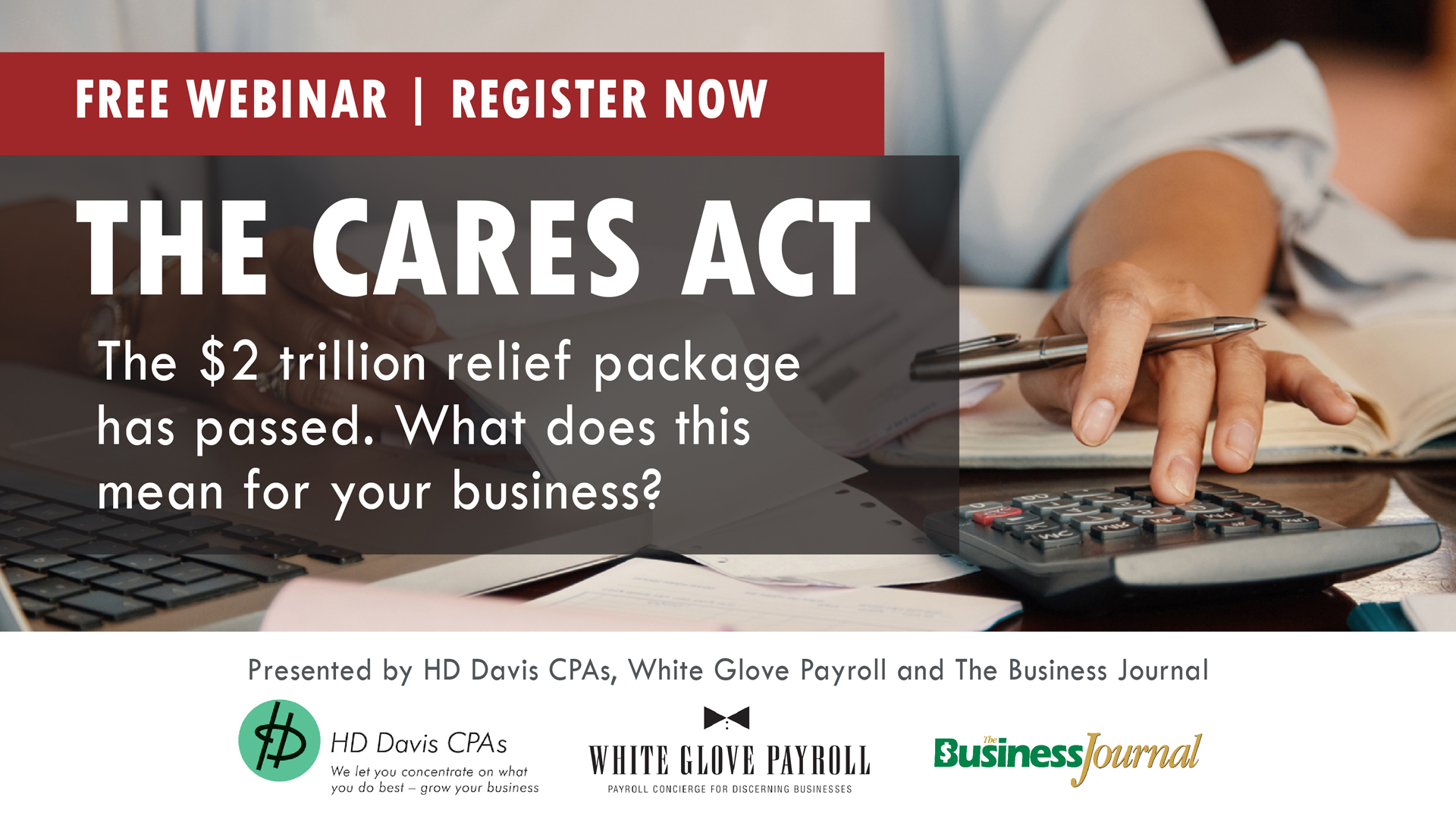Watch Business Journal Webinar on the CARES Act
YOUNGSTOWN, Ohio – At almost 900 pages, there’s plenty of material in the Coronavirus Aid, Relief and Economic Security Act to keep readers busy.
Don’t have the time to sort through it all? To help business leaders learn the details, The Business Journal partners with HD Davis CPAs and White Glove Payroll to give you the highlights, both for the parts of the act that apply to businesses and those that are aimed at individuals.
Perhaps the most important part of the CARES Act for businesses is the Paycheck Protection Program. It sets aside $367 billion for loans backed by Small Business Administration. Applications, open through June 30, open Friday through banks.
Businesses can get loans of 2 1/2 times their average monthly payroll of the past 12 months or, if they haven’t been in business for more than a year, 2 1/2 times the average monthly payroll of January and February. The loans must be used to continue operations, keep employees on payroll and make mortgage, lease and/or utility payments.
“We have to be overly prepared for the documentation that may or may not be required,” says Tim Petrey, managing member of HD Davis. “What many will find out, probably very soon, is that the SBA process is pretty intrusive, to say the least. I’m trying to make sure people have a variety of information to support your calculations.”
The application is “fairly straightforward” in how it asks for payroll costs, he adds.
“Just remember that you need to have all the information you can to support that and show proof,” he says.
For individuals making less than $75,000 per year, $1,200 stimulus payments will be made for those who filed federal tax returns in 2019 or 2018. Married couples have a $150,000 have a $150,000 cap and will receive $2,400. The stimulus check will decrease $5 for every $100 over the threshold for both couples and individuals.
“Payments will be made now through Dec. 31 and if you’ve included your bank information on your IRS tax returns, you will begin getting those payments to those accounts,” says Angela Johnson, HD Davis communications coordinator.
“You won’t have to claim this as income on your return. This is solely for your benefit,” she continues. “If you get this payment this year and it’s not enough based on what next year brings, you can take that offsetting difference as a tax credit on your return. If you get too much this year based on next year’s return, you don’t have to do anything.”
The webinar is part of an ongoing series to keep businesses informed throughout the coronavirus outbreak. Check out BusinessJournalDaily.com/webinars for more information.
The full webinar can be watched here and a PDF of the slides used is available here. All information in the webinar is accurate as of March 31, 2020.
Copyright 2024 The Business Journal, Youngstown, Ohio.



